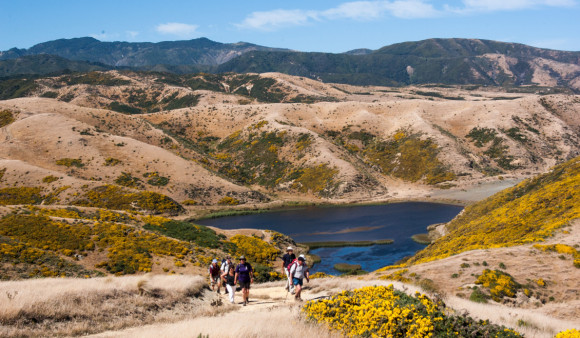Permit applications
Why do I need a permit?
Certain activities in Greater Wellington regional parks and forests require written permission. If activities were not managed, these actions could adversely affect natural or cultural resources, or they could lead to conflicts between park users. Operating a system of permits is an effective method of managing resources and minimising potential conflicts.
What sort of permit do I need?
If you are planning on:
- Hunting introduced animals
- Trail biking (motorbikes and quad bikes)
- Research, including collecting material
You require an activity permit.
If you are one of the following:
- Horse rider
- Contractor
- Landowners requiring access
- Four-wheel drive club
- Emergency services
- Staff
You require a Special Access Permit.
Activities and access can vary from park to park, so check the park specific information below.
Permits are usually issued unless the area or resource is already fully booked or allocated.
Activity permit applications
The following activities require a permit. If your intended activity is not shown below, please contact the relevant park ranger in the first instance. More information is available on fees and conditions for managed (permitted) and non-commercial activities on the Concessions page. We will forward your permit or contact you to discuss your application within five working days.
Akatarawa Forest
Greater Wellington welcomes hunters to selected parts of our parks. A hunting permit is required.
There are several species available for hunting across the park network, and some only in certain locations at certain times. The table below summarises hunting by location and species on GW land at Akatarawa Forest.
| Deer | Pig | Goat | ||
| Akatarawa Forest | Native | |||
| Plantation |
See map area |
|||
Hunting map
Hunting in Akatarawa Forest


date_range Published 01 Jun 2022
Download now (PDF 1.1 MB) get_appHunting permits
You need a permit – they are free of charge and are valid for 12 months (unless specified), and you must show this permit if asked by a Greater Wellington Regional Council authorised officer, so remember to print out your permit or save it to your phone.
There are different kinds of permit for hunting different animals in different places, but for your convenience we've put these all together in one form, which you can access below. The Akatarawa, Kaitoke and Pakuratahi areas have one permit to cover all these hunting areas.
(Not accessible on Internet Explorer)
Carefully read your permit conditions. Be familiar with the map and terrain of the area and stay within it – you can find all maps in the side panel.
You must be at least 200m away from roads, tracks, and boundaries with private land, and obtain permission from landowners if you’re going to cross private land.
All kills must be in the permitted area but 50m away from roads, tracks and boundaries with private land and only in the designated hunting area.
Firearms: only centre-fire rifles of calibre .222 Remington or larger may be used for hunting, or crossbows and bows with a minimum drawing factor of 18kg (40lb). Shotguns, air rifles and rimfire rifles are not permitted.
Loaded firearms are forbidden outside the designated hunting area.
Motorised access in Akatarawa
- Motorbikes and quads can be used in Akatarawa Forest - a permit for this is required
- Entry via Karapoti Road (Upper Hutt) or Maungakotukutuku (Kāpiti)
Hunting Safety
Please keep in mind that a lot of people use our regional parks:
- Identify your target beyond any doubt
- Treat every firearm as loaded
- Always point firearms in a safe direction
- Load a firearm only when you are ready to fire
- Check your firing zone
- Avoid alcohol and drugs when using firearms
- Store firearms and ammunition safely
Safety in the outdoors
Many hunting areas are isolated, rugged and exposed to high winds. There may be few formed tracks or market and maintained routes. We live in Wellington so we shouldn't need to remind you that weather conditions in our parks and forests are changeable. Remember to:
- Take a wind and waterproof jacket and wear layers of clothing that can be taken off or on as you need. Always carry enough clothes for cold conditions
- Take ample high-energy food, drinking water, map, compass or GPS and a first aid kit. Take a phone but be aware that you may not get mobile phone coverage everywhere in our parks. We recommend carrying an emergency locator beacon
- Do not attempt to cross flooded streams. Be prepared to wait if conditions become dangerous
- Let someone know where you are going and what time you intend to be back - they can raise the alarm if you don't arrive as expected
- Check weather forecast before leaving
Taking care of the park
Take your rubbish home with you.
Keep rivers and streams clean. Bury toilet waste in a shallow hole well away from waterways. Dispose of carcasses and offal at least 50 metres away from streams.
Do not remove, disturb or damage native plants or animals.
Don't light fires and take care with portable stoves, matches and cigarettes.
Park your vehicle clear of gateways and don't block access roads.
Please don't interfere with any markers, plot pegs, monitoring devices, baits, carcasses traps or bait stations. Pay attention to any warning signs posted.
Seeds and fragments of weeds can easily be accidentally carried into places where it could be harmful, so please search for and remove all seeds and plant fragments from clothing, equipment, vehicles and dog fur before entering the catchment.
The Akatarawa Forest is an important regional resource for motorised recreation. Permit systems are run for the two types of motorised recreation allowed in the Akatarawa Forest.
Four wheel driving
Four wheel drive clubs can apply for Special Access Permits.
From July 1st 2014 four wheel drive clubs access will only be approved for current ARAC certified trip leaders. For safety and environmental reasons, no private 4WD trips are allowed into the Akatarawa Forest.
All motorised recreational users must comply with the Motorised Recreational User Code, developed by ARAC and Greater Wellington in 1997. The code explains the restrictions and behaviour standards necessary to meet Greater Wellington's statutory obligations to protect the environment, other recreational users and adjoining landowners.
ARAC and Greater Wellington have since developed 4WD access maps identifying specific tracks that are available for motorised recreation. Conditions apply to some tracks to minimise impacts and motorised use will no longer be allowed if conditions are not met.
LUV (Light Utility Vehicle) or Side by Sides
LUV’s are permitted into Akatarawa Forest for recreational purpose with an approved club and ARAC/GW trip leader. Approved club and ARAC/GW trip leaders enter through the locked gates with the club’s electronic fob key.
Drivers must comply with the Motorised Recreational User Code (PDF 1.7 MB) . Head protection, ie, helmets to be worn by all people in LUV. Casual (non-club) entry or entry over/through fences and gates is not allowed.
Trail biking
Good news! You can now get your trail biking permits instantly. We have received a lot of feedback over the years from our trail bikers. One of the things you wanted was instant permits and for us to make it easier to find these on our website. We have been working hard behind the scenes to make this happen for you. Just click on "Apply for trail biking permit", *** set up or log in to your MyGW account, select the permit you want, and your permit will be emailed back to you within minutes.
Both motorbikes and quads require a trail biking permit.
Permits can now only be applied for via our website and are no longer available in paper format or from the Upper Hutt office.
Please remember that you must have your permit on you at all times within the designated area. To make things easier for you, you can simply take a screenshot of your permit and keep it on your phone. Then you can show the Ranger if you are asked so there is no need to print it out if you don’t want to. We hope you enjoy this new streamlined process!
Today there is an extensive network of roads and old logging tracks through the regenerating bush and pine trees of the Akatarawa Forest. The main four wheel drive roads through the forests are open to the public for quad and trail biking, and there is a trail bike zone through the forest. Trail bikes are not allowed elsewhere in the forest or in the other regional parks.
All casual trail bikers must have individual permits. Greater Wellington issues these permits at no charge. Apply for your trail biking permit.
There is a 30km per hour speed limit in the forest. Casual two- and four-wheel drive off-road racing, scrambling, motocross, and competitive riding or driving is not permitted.
Sensitive ecological zones
Trail biking is not permitted in ecologically sensitive zones such as:
- The summits of Mounts Barton, Maunganui, Titi and Wainui
- The upper Akatarawa Valley
- Riparian zones (rivers and stream margins), stream beds, swamps and wetlands
Greater Wellington and the Akatarawa Recreation Access Committee (ARAC) have agreed guidelines for motorised recreation (PDF 1.7 MB) in the forest to help protect the environment, other recreational users and adjoining landowners. Your co-operation with this code will impact directly on the future access of motorised recreational users to this area – please respect it.
Trail bike routes
Akatarawa Forest Traverse
Distance: 27 km
This route links Maungakotukutuku Valley with Karapoti Road in Upper Hutt. Ride up Perhams Road to Titi Ridge, turn right and then left down Whakatiki Road. After crossing Dopers Creek climb steeply over the Pram Track (530 m) and down to the ford at Akatarawa River West. From here it is a gentle 8 km ride through Karapoti Gorge to Akatarawa.
Safety and Responsibility
- Stay on designated tracks. Refer to motorised recreation map. (PDF 2.1 MB)
- Keep your speed down and keep left – these are not race tracks. Remember the 30 km per hour speed limit
- Consider track conditions and other track users. Always assume there may be someone coming around the next corner
- Respect other people’s rights. Always give way to others and pass with care
- Use approved safety gear (gloves, boots, chest protectors) and always wear a helmet
- Ride or drive well-maintained bikes or vehicles with effective mufflers
- Travel in groups and with experienced people, in case you have an accident and to avoid getting lost
- Take warm clothing. Be prepared for rapid weather changes and rapid flooding of river crossings
- Let others know of your intended route and estimated time of return
- Please report any vandalism of signs or damage to tracks (such as slips or blocked culverts) to Greater Wellington's Upper Hutt office
- Every party should carry a first aid kit, map and compass, breakdown tools, tow rope, food and drink and a cell-phone and fire extinguisher
- Always carry a valid permit. You may be asked to produce it
- Respect the environment and Greater Wellington’s responsibilities for managing the forest and water quality
- Leave no trace of your visit – don’t litter. Take all of your own and maybe other people’s rubbish home
GW has a permit system in place for anyone who wishes to collect any material and/or carry out research within our parks and forests.
Please read the attached letter (PDF 154 KB) and complete the application forms for either a Low Impact (PDF 162 KB) or a High Impact Permit (PDF 169 KB) .
Generally the Low Impact Permit will be sufficient. However, use the High Impact Permit application if the activity involves:
- commercial use of the material
- collection of DNA samples (except for exotic species and/or purely taxonomic classification purposes)
- genetic modification
- material being removed from New Zealand
- rare or endangered species
- significant adverse effects on a species or its habitat
- any other invasive collection methods
- any other significant effect
What to do
Fill out pages 1-4 of the Low Impact application form or pages 1-5 of the High Impact application form and drop or send to:
Attn: Advisor, Biodiversity Monitoring
Greater Wellington Regional Council
PO Box 11646 Manners Street
Wellington 6142
Low Impact Application form, there is no processing fee.
High Impact Application form processing fee is $150 (GST inclusive). This must accompany your application or it will not be processed.
Each application received will be individually assessed by GW and Tangata Whenua. If your application is successful, you will be sent the completed and signed copy of the Permit. When you receive the Permit, sign in the space provided at the end of it. Any permit that is not signed by a GW Biodiversity staff member and the Applicant is deemed invalid.
When conducting the activity, you must carry the Permit with you at all times.
If you are unsuccessful in your application, you will be notified by a Greater Wellington staff member in writing or by telephone.
Please allow 2-3 weeks from Greater Wellington's receipt of your application for processing.
For further information
To find out more, contact Owen Spearpoint at Owen.Spearpoint@gw.govt.nz or Barrett Pistoll at Barrett.Pistoll@gw.govt.nz.
Hunting in Akatarawa Forest Map
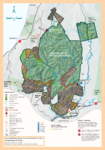

date_range Published 01 Jun 2022
Download now (PDF 1.1 MB) get_appAkatarawa Forest Motorised Recreation Tracks
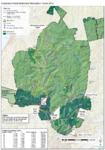

date_range Published 01 Jun 2022
Download now (PDF 2.1 MB) get_appAkatarawa Forest Motorised Recreation Activities
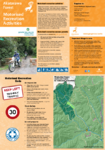

date_range Published 01 Jun 2022
Download now (PDF 1.7 MB) get_appCovering letter to accompany collection permit
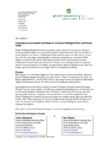

date_range Published 01 Jun 2022
Download now (PDF 154 KB) get_appLow Impact Collecting and Research Permit Application Form
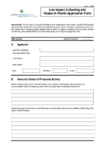

date_range Published 01 Jun 2022
Download now (PDF 162 KB) get_appHigh Impact Collecting and Research Permit Application Form
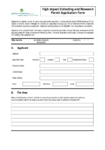

date_range Published 01 Jun 2022
Download now (PDF 169 KB) get_appBattle Hill Forest
date_range
Published 01 Jun 2022
Battle Hill Farm Forest Park Map
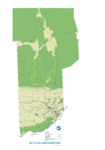

date_range
Published 01 Jun 2022
Battle Hill Farm Forest Park front paddocks map
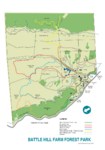

Covering letter to accompany collection permit


date_range Published 01 Jun 2022
Download now (PDF 154 KB) get_appLow Impact Collecting and Research Permit Application Form


date_range Published 01 Jun 2022
Download now (PDF 162 KB) get_appHigh Impact Collecting and Research Permit Application Form


date_range Published 01 Jun 2022
Download now (PDF 169 KB) get_appGW has a permit system in place for anyone who wishes to collect any material and/or carry out research within our parks and forests.
Please read the attached letter (PDF 154 KB) and complete the application forms for either a Low Impact (PDF 162 KB) or a High Impact Permit (PDF 169 KB) .
Generally the Low Impact Permit will be sufficient. However, use the High Impact Permit application if the activity involves:
- commercial use of the material
- collection of DNA samples (except for exotic species and/or purely taxonomic classification purposes)
- genetic modification
- material being removed from New Zealand
- rare or endangered species
- significant adverse effects on a species or its habitat
- any other invasive collection methods
- any other significant effect
What to do
Fill out pages 1-4 of the Low Impact application form or pages 1-5 of the High Impact application form and drop or send to:
Attn: Advisor, Biodiversity Monitoring
Greater Wellington Regional Council
PO Box 11646 Manners Street
Wellington 6142
Low Impact Application form, there is no processing fee.
High Impact Application form processing fee is $150 (GST inclusive). This must accompany your application or it will not be processed.
Each application received will be individually assessed by GW and Tangata Whenua. If your application is successful, you will be sent the completed and signed copy of the Permit. When you receive the Permit, sign in the space provided at the end of it. Any permit that is not signed by a GW Biodiversity staff member and the Applicant is deemed invalid.
When conducting the activity, you must carry the Permit with you at all times.
If you are unsuccessful in your application, you will be notified by a Greater Wellington staff member in writing or by telephone.
Please allow 2-3 weeks from Greater Wellington's receipt of your application for processing.
For further information
To find out more, contact Owen Spearpoint at Owen.Spearpoint@gw.govt.nz or Barrett Pistoll at Barrett.Pistoll@gw.govt.nz.
Belmont Regional Park
GW has a permit system in place for anyone who wishes to collect any material and/or carry out research within our parks and forests.
Please read the attached letter (PDF 154 KB) and complete the application forms for either a Low Impact (PDF 162 KB) or a High Impact Permit (PDF 169 KB) . For access into Belmont Regional Park, a $100 key bond is also required.
Generally the Low Impact Permit will be sufficient. However, use the High Impact Permit application if the activity involves:
- commercial use of the material
- collection of DNA samples (except for exotic species and/or purely taxonomic classification purposes)
- genetic modification
- material being removed from New Zealand
- rare or endangered species
- significant adverse effects on a species or its habitat
- any other invasive collection methods
- any other significant effect
What to do
Fill out pages 1-4 of the Low Impact application form or pages 1-5 of the High Impact application form and drop or send to:
Attn: Advisor, Biodiversity Monitoring
Greater Wellington Regional Council
PO Box 11646 Manners Street
Wellington 6142
Low Impact Application form, there is no processing fee.
High Impact Application form processing fee is $150 (GST inclusive). This must accompany your application or it will not be processed.
Each application received will be individually assessed by GW and Tangata Whenua. If your application is successful, you will be sent the completed and signed copy of the Permit. When you receive the Permit, sign in the space provided at the end of it. Any permit that is not signed by a GW Biodiversity staff member and the Applicant is deemed invalid.
When conducting the activity, you must carry the Permit with you at all times.
If you are unsuccessful in your application, you will be notified by a Greater Wellington staff member in writing or by telephone.
Please allow 2-3 weeks from Greater Wellington's receipt of your application for processing.
For further information
To find out more, contact Owen Spearpoint at Owen.Spearpoint@gw.govt.nz or Barrett Pistoll at Barrett.Pistoll@gw.govt.nz.
Belmont Regional Park brochure
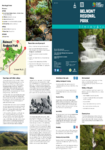

date_range Published 18 Jan 2022
Download now (PDF 1.9 MB) get_appCovering letter to accompany collection permit


date_range Published 01 Jun 2022
Download now (PDF 154 KB) get_appLow Impact Collecting and Research Permit Application Form


date_range Published 01 Jun 2022
Download now (PDF 162 KB) get_appHigh Impact Collecting and Research Permit Application Form


date_range Published 01 Jun 2022
Download now (PDF 169 KB) get_appEast Harbour Regional Park
Baring Head provides a striking backdrop for horse riding.
Apply for permit
You need to have a horse riding permit to ride in Baring Head. The permit is valid for 1 year.
Things to keep in mind
- Follow the parks care code
- You have to cross a bridge at the entrance which can spook some horses.
- Roads and tracks can be steep slippery at times.
- Dismount and lead your horse where the track crosses steep gravel fans.
Tracks
Most tracks at Baring Head are available to horse riders. Follow the signs and stick to the designated paths. See the map for more details:
East Harbour Regional Park, Baring Head/ Ōrua-pouanui Horse Riding Map
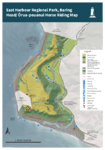

date_range Published 08 May 2023
Download now (PDF 237 KB) get_appHunting in East Harbour Regional Park is by permit only and is restricted to the Gollans Stream catchment area in the Northern Forest.
This area is a mix of slopes clothed in beech and rata forest, and the valley floor contains lush semi-swamp forest including kahikatea, pukatea and nikau palms.
The Northern Forest area of East Harbour Regional Park sits between the urban areas of Eastbourne and Wainuiomata and is very popular with walkers and dog walkers. Mountain bikers have access from the Wainuiomata Hill to south east Wainuiomata along the Rata Ridge Track.
The hunting area of Gollans Stream catchment uses the Eastern Ridge, Western Ridge and the Eastern Butterfly Creek Ridge as boundaries. These are geographically well defined and provide easily distinguishable boundaries, keeping hunters away from the park's ‘urban interface’ perimeters.
Toxin use in this area
Poisoning and/or trapping of possums and other animals occurs in the area covered by this permit, and therefore we caution against touching any bait, lures or carcasses found.
Rodents are being controlled by the use of toxins, in bait stations, throughout large parts of the East Harbour Northern Forest, including within the designated hunting area, as well as adjoining private properties. The toxins currently being used are brodifacoum, bromadiolone and diphacinone. These poisons have a cautionary period of 3 years for feral animal consumption.
Please check the Ministry of Health Food Safety for Hunters.
Pig Hunting - Northern Forest East Harbour Regional Park
Permits are issued for a period of 10 months (May to February), there is NO pig hunting during March and April, due to deer hunting ballot.
Download the pig hunting map. (PDF 1.8 MB)
Conditions
- The permit is issued in accordance with Greater Wellington Regional Council Bylaws for Forests, Parks and Recreation Areas 2009. The Bylaws are available at GWRC office or on our website to familiarise yourself.
- The permit must be carried with you at all times or available on your mobile device and presented to an authorised officer on request.
- The permit only allows hunting on land designated by the permit map.
- The permit holder must obtain permission to cross private land from the owner or occupier.
- The use of firearms, bows and live capture traps is prohibited.
- No more than three (3) hunting dogs are allowed per permitted hunter.
- Outside of the hunting area dogs must be leashed at all times.
- All hunting dogs must be registered and should display visual identification at all times (registration tag, branding or tattoo), or are to be micro-chipped and must be fitted with tracking collars.
- Lost hunting dogs must be reported to GWRC’s call centre as soon as possible on 0800 496 734.
- No dogs listed on a local authority database as dangerous may be used for hunting purposes in East Harbour Regional Park
- No hunting is to take place within 200 meters of any tracks or the hunting boundaries marked on permit maps.
- Carcasses and offal must be buried well away from stream beds, huts, campsites and tracks (50 meters at least).
- No gutting of carcasses near streams. Prepare the animal for removal as far away from streams as possible.
- Hunting will be permitted between 5am and 8pm. No shooting in the hours of darkness.
- Light NO fires
- Do not eat animals from this area.
- All rubbish must be removed from Greater Wellington Regional Council land by the permit holder.
- Permit holders shall exercise due care of other forest users and the environment at all times.
- This permit is not transferable and must be surrendered on demand to an authorised officer.
- Failure to adhere to these conditions will result in cancellation of the permit and/or trespass orders issued.
Deer Hunting – Northern Forest East Harbour Regional Park
There is an annual ballot to win one of the multiple hunting periods for the entire block in April each year. Applications are made online and the ballot opens at the end of January each year and closes at the end of February.
Download the deer hunting map (PDF 2.2 MB)
Conditions
- The permit is issued in accordance with Greater Wellington Regional Council Bylaws for Forests, Parks and Recreation Areas 2009. The Bylaws are available at GWRC office or on our website to familiarise yourself.
- The permit must be carried with you at all times or available on your mobile device and presented to an authorised officer on request.
- The permit only allows hunting on land designated by the permit map.
- The permit holder must obtain permission to cross private land from the owner or occupier.
- Both hunter and hunting partner must have a current New Zealand Firearm Licence
- No loaded firearms are to be carried on any access track outside the permit area.
- Only centre fire rifles of calibre .222 Remington or larger may be used for hunting, or crossbows and bows with a minimum drawing factor of 18kg (40lb). Shotguns, air rifles and rimfire rifles are prohibited.
- The use of bows and live capture traps is prohibited.
- No more than three (3) dogs are allowed per permitted hunter.
- Outside of the hunting area dogs must be leashed at all times.
- All dogs must be registered and should display visual identification at all times (registration tag, branding or tattoo), or are to be micro-chipped and must be fitted with tracking collars.
- Lost hunting dogs must be reported to GWRC’s call centre as soon as possible on 0800 496 734.
- No dogs listed on a local authority database as dangerous may be used for hunting purposes in East Harbour Regional Park.
- No hunting is to take place within 200 metres of any tracks or the hunting boundaries marked on the permit maps.
- Carcasses and offal must be buried well away from stream beds, huts, campsites and tracks (50 meters at least).
- No gutting of carcasses near streams. Prepare the animal for removal as far away from streams as possible.
- Hunting will be permitted between 5am and 8pm. No shooting in the hours of darkness.
- Light NO fires.
- Do not eat animals from this area.
- All rubbish must be removed from Greater Wellington Regional Council land by the permit holder.
- Permit holders shall exercise due care of other forest users and the environment at all times.
- This permit is not transferable and must be surrendered on demand to an authorised officer.
- Failure to adhere to these conditions will result in cancellation of the permit and/or trespass orders issued.
Please check the Ministry of Health Food Safety for Hunters.
Know before you go
- There are no facilities in the Northern Forest and sudden weather changes can occur.
- Fires are prohibited.
- Always carry enough warm clothes and rainwear for cold conditions.
- Check weather forecasts on Metservice before leaving and take ample high energy food for your trip.
- Let someone know your intended route, party size and return time. Always contact this person on your return.
- Read and understand the Land Safety Code.
Caring for the environment
- Keep the streams clean. Bury toilet waste in a shallow hole well away from watercourses.
- Light no fires. Take care with portable stoves, matches and cigarettes.
- Remove rubbish. Carry out what you carry in.
- Hunting is by permit only in the Northern Forest, East Harbour Regional Park.
- Foot access only. No motor vehicles or trail bikes are allowed in the Northern Forest.
- Do not damage or remove plants. Do not disturb vegetation research plots and markers.
- Do not hunt, trap, shoot or kill any bird or other native fauna.
Hunting FAQs
What bait/toxins are in the area?
Rodents are being controlled by the use of toxins in bait stations throughout large parts of the East Harbour Northern Forest, including within the designated hunting area, as well as adjoining private properties. The toxins in bait stations currently being used are brodifacoum, bromadiolone and diphacinone. These poisons have a cautionary period of 3 years for feral animal consumption.
Please check the Ministry of Health Food Safety for Hunters.
Do I need a 4WD?
No vehicle access.
Can I camp overnight?
Yes – you must be 500m from a road entrance, track or structure. The following rules apply:
- Carry in and out all equipment and rubbish
- Leave no trace of visit
- No open fires
- Human waste must be buries at least 100m away from any waterway or a ‘poo tube’ carried
Do professional cullers operate in The Northern Forest?
Yes, professional hunters cull twice a year. Once in Spring and once after the public ballot. They predominately target the periphery of the park.
What are the hours of hunting?
5.30am till 8pm. You must ensure you are out of the area by this time.
If you have any further questions please email parks@gw.govt.nz.
Hunting Ballot FAQs
How is the ballot run?
The ballot is run by an online, automated process. Successful applicants will receive an email identifying the block you have been allocated.
Is there a cost?
No cost.
What are the dates and how many blocks are available?
Hunting is for the entire block and each winner will be allocated a 2 or 3 day period. These vary year to year.
Where are the blocks in the parks?
Download the East Harbour hunting ballot blocks map (PDF 2.2 MB)
Does my nominated partner need a firearms licence?
Yes. As the block holder you are responsible to ensure that both the Firearms Acts and the Terms and Conditions you accepted to receive the hunting block are obeyed by you and your partner at all times.
What if I win a block and my nominated hunting partner can’t make that date or pulls out, can I bring someone else?
You can change your nominated partner. However, you must let the parks team know as soon as possible so changes to your permit can be made. Please email parks@gw.govt.nz if you wish to change your hunting partner.
Will other people be present in my ballot hunting block?
No, each block is dedicated to you for the dates specified on your permit.
I have heard that you send professional hunters in prior to the ballot, is this true?
East Harbour Regional Park has professional hunters culling deer each year. These occur either in spring or autumn but not within the ballot time. This work is done to target deer and indicating dogs are used. Goats and pigs are destroyed if they are encountered.
GW has a permit system in place for anyone who wishes to collect any material and/or carry out research within our parks and forests.
Please read the attached letter (PDF 154 KB) and complete the application forms for either a Low Impact (PDF 162 KB) or a High Impact Permit (PDF 169 KB) .
Generally the Low Impact Permit will be sufficient. However, use the High Impact Permit application if the activity involves:
- commercial use of the material
- collection of DNA samples (except for exotic species and/or purely taxonomic classification purposes)
- genetic modification
- material being removed from New Zealand
- rare or endangered species
- significant adverse effects on a species or its habitat
- any other invasive collection methods
- any other significant effect
What to do
Fill out pages 1-4 of the Low Impact application form or pages 1-5 of the High Impact application form and drop or send to:
Attn: Advisor, Biodiversity Monitoring
Greater Wellington Regional Council
PO Box 11646 Manners Street
Wellington 6142
Low Impact Application form, there is no processing fee.
High Impact Application form processing fee is $150 (GST inclusive). This must accompany your application or it will not be processed.
Each application received will be individually assessed by GW and Tangata Whenua. If your application is successful, you will be sent the completed and signed copy of the Permit. When you receive the Permit, sign in the space provided at the end of it. Any permit that is not signed by a GW Biodiversity staff member and the Applicant is deemed invalid.
When conducting the activity, you must carry the Permit with you at all times.
If you are unsuccessful in your application, you will be notified by a Greater Wellington staff member in writing or by telephone.
Please allow 2-3 weeks from Greater Wellington's receipt of your application for processing.
For further information
To find out more, contact Owen Spearpoint at Owen.Spearpoint@gw.govt.nz or Barrett Pistoll at Barrett.Pistoll@gw.govt.nz.
East Harbour Regional Park brochure
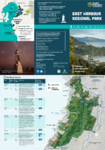

date_range Published 19 Aug 2022
Download now (PDF 1.7 MB) get_appCovering letter to accompany collection permit


date_range Published 01 Jun 2022
Download now (PDF 154 KB) get_appLow Impact Collecting and Research Permit Application Form


date_range Published 01 Jun 2022
Download now (PDF 162 KB) get_appHigh Impact Collecting and Research Permit Application Form


date_range Published 01 Jun 2022
Download now (PDF 169 KB) get_appHutt River Trail
GW has a permit system in place for anyone who wishes to collect any material and/or carry out research within our parks and forests.
Please read the attached letter (PDF 154 KB) and complete the application forms for either a Low Impact (PDF 162 KB) or a High Impact Permit (PDF 169 KB) .
Generally the Low Impact Permit will be sufficient. However, use the High Impact Permit application if the activity involves:
- commercial use of the material
- collection of DNA samples (except for exotic species and/or purely taxonomic classification purposes)
- genetic modification
- material being removed from New Zealand
- rare or endangered species
- significant adverse effects on a species or its habitat
- any other invasive collection methods
- any other significant effect
What to do
Fill out pages 1-4 of the Low Impact application form or pages 1-5 of the High Impact application form and drop or send to:
Attn: Advisor, Biodiversity Monitoring
Greater Wellington Regional Council
PO Box 11646 Manners Street
Wellington 6142
Low Impact Application form, there is no processing fee.
High Impact Application form processing fee is $150 (GST inclusive). This must accompany your application or it will not be processed.
Each application received will be individually assessed by GW and Tangata Whenua. If your application is successful, you will be sent the completed and signed copy of the Permit. When you receive the Permit, sign in the space provided at the end of it. Any permit that is not signed by a GW Biodiversity staff member and the Applicant is deemed invalid.
When conducting the activity, you must carry the Permit with you at all times.
If you are unsuccessful in your application, you will be notified by a Greater Wellington staff member in writing or by telephone.
Please allow 2-3 weeks from Greater Wellington's receipt of your application for processing.
For further information
To find out more, contact Owen Spearpoint at Owen.Spearpoint@gw.govt.nz or Barrett Pistoll at Barrett.Pistoll@gw.govt.nz.
Hutt Water Collection Area
Vehicles are not permitted in the park and there are few or no facilities in this rugged area.
If you want to hunt in one of our parks, you'll need to get a permit.
Apply for your hunting permit (not accessible on Internet Explorer).
Sustainable deer hunting
In order to manage numbers of deer and keep their numbers at sustainable levels, the NZ Game Animal Council advises that hunters try to shoot two to three hinds for every stag that they shoot, and to target older stags rather than younger ones. Read their full letter for more information and advice. (PDF 260 KB)
Hunting hot spots
These are the locations in the Hutt Water Collection Area where the most animals are located by our professional hunters. This information is based on hunters' reports from February 2020 to February 2021.
Hutt Water Collection Area - Hunting hot spots
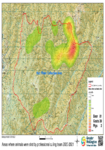
This is a heat map of areas where deer, goats, and pigs were found in the Hutt Water Collection Area between 2020 and 2021. Read more here

date_range Published 20 Oct 2021
Download now (PDF 2.3 MB) get_appKaitoke Regional Park
Te Marua
There are tracks available for public horseriding at Te Marua.
Riders will need to apply for a Special Access Permit (not accessible on Internet Explorer) and pick up keys from GW's Upper Hutt office to ride in the pine plantation and through to the Pakuratahi Forest as there are several locked gates along the way.
The Te Marua pony club is based near the park entrance.
Greater Wellington welcomes hunters to selected parts of our parks. A hunting permit is required.
There are several species available for hunting across the park network, and some only in certain locations at certain times. The table below summarises hunting by location and species on GW land.
| Deer | Pig | Goat | ||
| Kaitoke Regional Park | North of Hutt River | |||
| South of Hutt River |
See map area |
|||
Hunting map
Kaitoke hunting map


date_range Published 01 Jun 2022
Download now (PDF 22 MB) get_appHunting permits
You need a permit – they are free of charge and are valid for 12 months (unless specified), and you must show this permit if asked by a Greater Wellington Regional Council authorised officer, so remember to print out your permit or save it to your phone.
There are different kinds of permit for hunting different animals in different places, but for your convenience we've put these all together in one form, which you can access below. The Akatarawa, Kaitoke and Pakuratahi areas have one permit to cover all these hunting areas.
(Not accessible on Internet Explorer)
Carefully read your permit conditions. Be familiar with the map and terrain of the area and stay within it – you can find all maps in the side panel.
You must be at least 200m away from roads, tracks, and boundaries with private land, and obtain permission from landowners if you’re going to cross private land.
All kills must be in the permitted area but 50m away from roads, tracks and boundaries with private land and only in the designated hunting area.
Firearms: only centre-fire rifles of calibre .222 Remington or larger may be used for hunting, or crossbows and bows with a minimum drawing factor of 18kg (40lb). Shotguns, air rifles and rimfire rifles are not permitted.
Loaded firearms are forbidden outside the designated hunting area.
Hunting Safety
Please keep in mind that a lot of people use our regional parks:
- Identify your target beyond any doubt
- Treat every firearm as loaded
- Always point firearms in a safe direction
- Load a firearm only when you are ready to fire
- Check your firing zone
- Avoid alcohol and drugs when using firearms
- Store firearms and ammunition safely
Safety in the outdoors
Many hunting areas are isolated, rugged and exposed to high winds. There may be few formed tracks or market and maintained routes. We live in Wellington so we shouldn't need to remind you that weather conditions in our parks and forests are changeable. Remember to:
- Take a wind and waterproof jacket and wear layers of clothing that can be taken off or on as you need. Always carry enough clothes for cold conditions
- Take ample high-energy food, drinking water, map, compass or GPS and a first aid kit. Take a phone but be aware that you may not get mobile phone coverage everywhere in our parks. We recommend carrying an emergency locator beacon
- Do not attempt to cross flooded streams. Be prepared to wait if conditions become dangerous
- Let someone know where you are going and what time you intend to be back - they can raise the alarm if you don't arrive as expected
- Check weather forecast before leaving
Taking care of the park
Take your rubbish home with you.
Keep rivers and streams clean. Bury toilet waste in a shallow hole well away from waterways. Dispose of carcasses and offal at least 50 metres away from streams.
Do not remove, disturb or damage native plants or animals.
Don't light fires and take care with portable stoves, matches and cigarettes.
Park your vehicle clear of gateways and don't block access roads.
Please don't interfere with any markers, plot pegs, monitoring devices, baits, carcasses traps or bait stations. Pay attention to any warning signs posted.
Seeds and fragments of weeds can easily be accidentally carried into places where it could be harmful, so please search for and remove all seeds and plant fragments from clothing, equipment, vehicles and dog fur before entering the catchment.
GW has a permit system in place for anyone who wishes to collect any material and/or carry out research within our parks and forests.
Please read the attached letter (PDF 154 KB) and complete the application forms for either a Low Impact (PDF 162 KB) or a High Impact Permit (PDF 169 KB) .
Generally the Low Impact Permit will be sufficient. However, use the High Impact Permit application if the activity involves:
- commercial use of the material
- collection of DNA samples (except for exotic species and/or purely taxonomic classification purposes)
- genetic modification
- material being removed from New Zealand
- rare or endangered species
- significant adverse effects on a species or its habitat
- any other invasive collection methods
- any other significant effect
What to do
Fill out pages 1-4 of the Low Impact application form or pages 1-5 of the High Impact application form and drop or send to:
Attn: Advisor, Biodiversity Monitoring
Greater Wellington Regional Council
PO Box 11646 Manners Street
Wellington 6142
Low Impact Application form, there is no processing fee.
High Impact Application form processing fee is $150 (GST inclusive). This must accompany your application or it will not be processed.
Each application received will be individually assessed by GW and Tangata Whenua. If your application is successful, you will be sent the completed and signed copy of the Permit. When you receive the Permit, sign in the space provided at the end of it. Any permit that is not signed by a GW Biodiversity staff member and the Applicant is deemed invalid.
When conducting the activity, you must carry the Permit with you at all times.
If you are unsuccessful in your application, you will be notified by a Greater Wellington staff member in writing or by telephone.
Please allow 2-3 weeks from Greater Wellington's receipt of your application for processing.
For further information
To find out more, contact Owen Spearpoint at Owen.Spearpoint@gw.govt.nz or Barrett Pistoll at Barrett.Pistoll@gw.govt.nz.
Pākuratahi Forest
Tunnel Gully Recreation Area sits at the foot of Mt Climie (830m) in the Pākuratahi Forest north of Upper Hutt. Named for its link with the historic Remutaka Railway between Wellington and the Wairarapa, it features the 221m long Mangaroa Tunnel. Closed to trains in 1955, the tunnel now provides a recreation link between Tunnel Gully and Maymorn.
Because there are several locked gates along the tracks and to the parking areas, you need to apply for a Special Access Permit (not accessible on Internet Explorer) to get keys from Greater Wellington’s Upper Hutt office. Please dismount and lead your horse through the Mangaroa Tunnel and the Kaitoke Hill underpass.
More information, including permit applications and a map of the area is available in the link to rhe right.
There is a float parking and turning area available off Kaitoke Loop behind locked gates. No horse riding is permitted on Tane’s Track or the Mt Climie access road.
The historic railway followed what now forms Station Drive, a metalled track joining the link to Kaitoke Regional Park. It also leads to a more challenging access track to the Remutaka Rail Trail via Goat Rock (579m). Please note you will be returning the same way if you ride up this track.
The Remutaka Rail Trail offers access to the Pakuratahi River and several picnic spots. Horses are not permitted in the Pakuratahi Tunnel. There is no horse riding access to the Remutaka Rail Trail via the main entrance.
Kaitoke Regional Park’s Te Marua entrance is dominated by the Stuart Macaskill water storage lakes. There are good views and hill riding opportunities available on tracks through the pine plantation.
Pākuratahi Forest Horse riding information and map
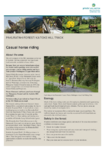

date_range Published 01 Jun 2022
Download now (PDF ) get_appGreater Wellington welcomes hunters to selected parts of our parks. A hunting permit is required.
There are several species available for hunting across the park network, and some only in certain locations at certain times. The table below summarises hunting by location and species on GW land.
| Deer | Pig | Goat | ||
| Pakuratahi Forest | Native | |||
| Plantation | ||||
Hunting map
Hunting in Pakuratahi Forest Brochure


date_range Published 01 Jun 2022
Download now (PDF 5.2 MB) get_appHunting permits
You need a permit – they are free of charge and are valid for 12 months (unless specified), and you must show this permit if asked by a Greater Wellington Regional Council authorised officer, so remember to print out your permit or save it to your phone.
There are different kinds of permit for hunting different animals in different places, but for your convenience we've put these all together in one form, which you can access below. The Akatarawa, Kaitoke and Pakuratahi areas have one permit to cover all these hunting areas.
(Not accessible on Internet Explorer)
Carefully read your permit conditions. Be familiar with the map and terrain of the area and stay within it – you can find all maps in the side panel.
You must be at least 200m away from roads, tracks, and boundaries with private land, and obtain permission from landowners if you’re going to cross private land.
All kills must be in the permitted area but 50m away from roads, tracks and boundaries with private land and only in the designated hunting area.
Firearms: only centre-fire rifles of calibre .222 Remington or larger may be used for hunting, or crossbows and bows with a minimum drawing factor of 18kg (40lb). Shotguns, air rifles and rimfire rifles are not permitted.
Loaded firearms are forbidden outside the designated hunting area.
Hunting Safety
Please keep in mind that a lot of people use our regional parks:
- Identify your target beyond any doubt
- Treat every firearm as loaded
- Always point firearms in a safe direction
- Load a firearm only when you are ready to fire
- Check your firing zone
- Avoid alcohol and drugs when using firearms
- Store firearms and ammunition safely
Safety in the outdoors
Many hunting areas are isolated, rugged and exposed to high winds. There may be few formed tracks or market and maintained routes. We live in Wellington so we shouldn't need to remind you that weather conditions in our parks and forests are changeable. Remember to:
- Take a wind and waterproof jacket and wear layers of clothing that can be taken off or on as you need. Always carry enough clothes for cold conditions
- Take ample high-energy food, drinking water, map, compass or GPS and a first aid kit. Take a phone but be aware that you may not get mobile phone coverage everywhere in our parks. We recommend carrying an emergency locator beacon
- Do not attempt to cross flooded streams. Be prepared to wait if conditions become dangerous
- Let someone know where you are going and what time you intend to be back - they can raise the alarm if you don't arrive as expected
- Check weather forecast before leaving
Taking care of the park
Take your rubbish home with you.
Keep rivers and streams clean. Bury toilet waste in a shallow hole well away from waterways. Dispose of carcasses and offal at least 50 metres away from streams.
Do not remove, disturb or damage native plants or animals.
Don't light fires and take care with portable stoves, matches and cigarettes.
Park your vehicle clear of gateways and don't block access roads.
Please don't interfere with any markers, plot pegs, monitoring devices, baits, carcasses traps or bait stations. Pay attention to any warning signs posted.
Seeds and fragments of weeds can easily be accidentally carried into places where it could be harmful, so please search for and remove all seeds and plant fragments from clothing, equipment, vehicles and dog fur before entering the catchment.
GW has a permit system in place for anyone who wishes to collect any material and/or carry out research within our parks and forests.
Please read the attached letter (PDF 154 KB) and complete the application forms for either a Low Impact (PDF 162 KB) or a High Impact Permit (PDF 169 KB) .
Generally the Low Impact Permit will be sufficient. However, use the High Impact Permit application if the activity involves:
- commercial use of the material
- collection of DNA samples (except for exotic species and/or purely taxonomic classification purposes)
- genetic modification
- material being removed from New Zealand
- rare or endangered species
- significant adverse effects on a species or its habitat
- any other invasive collection methods
- any other significant effect
What to do
Fill out pages 1-4 of the Low Impact application form or pages 1-5 of the High Impact application form and drop or send to:
Attn: Advisor, Biodiversity Monitoring
Greater Wellington Regional Council
PO Box 11646 Manners Street
Wellington 6142
Low Impact Application form, there is no processing fee.
High Impact Application form processing fee is $150 (GST inclusive). This must accompany your application or it will not be processed.
Each application received will be individually assessed by GW and Tangata Whenua. If your application is successful, you will be sent the completed and signed copy of the Permit. When you receive the Permit, sign in the space provided at the end of it. Any permit that is not signed by a GW Biodiversity staff member and the Applicant is deemed invalid.
When conducting the activity, you must carry the Permit with you at all times.
If you are unsuccessful in your application, you will be notified by a Greater Wellington staff member in writing or by telephone.
Please allow 2-3 weeks from Greater Wellington's receipt of your application for processing.
For further information
To find out more, contact Owen Spearpoint at Owen.Spearpoint@gw.govt.nz or Barrett Pistoll at Barrett.Pistoll@gw.govt.nz.
Queen Elizabeth Park
GW has a permit system in place for anyone who wishes to collect any material and/or carry out research within our parks and forests.
Please read the attached letter (PDF 154 KB) and complete the application forms for either a Low Impact (PDF 162 KB) or a High Impact Permit (PDF 169 KB) .
Generally the Low Impact Permit will be sufficient. However, use the High Impact Permit application if the activity involves:
- commercial use of the material
- collection of DNA samples (except for exotic species and/or purely taxonomic classification purposes)
- genetic modification
- material being removed from New Zealand
- rare or endangered species
- significant adverse effects on a species or its habitat
- any other invasive collection methods
- any other significant effect
What to do
Fill out pages 1-4 of the Low Impact application form or pages 1-5 of the High Impact application form and drop or send to:
Attn: Advisor, Biodiversity Monitoring
Greater Wellington Regional Council
PO Box 11646 Manners Street
Wellington 6142
Low Impact Application form, there is no processing fee.
High Impact Application form processing fee is $150 (GST inclusive). This must accompany your application or it will not be processed.
Each application received will be individually assessed by GW and Tangata Whenua. If your application is successful, you will be sent the completed and signed copy of the Permit. When you receive the Permit, sign in the space provided at the end of it. Any permit that is not signed by a GW Biodiversity staff member and the Applicant is deemed invalid.
When conducting the activity, you must carry the Permit with you at all times.
If you are unsuccessful in your application, you will be notified by a Greater Wellington staff member in writing or by telephone.
Please allow 2-3 weeks from Greater Wellington's receipt of your application for processing.
For further information
To find out more, contact Owen Spearpoint at Owen.Spearpoint@gw.govt.nz or Barrett Pistoll at Barrett.Pistoll@gw.govt.nz.
Find out more
If you did not find what you were searching for on this page and would like to ask any further questions please contact BusinessSupportHuttValley@gw.govt.nz or by calling 0800 496 734.
For information about Restricted activities in parks check Toitū Te Whenua Parks Network Plan and contact parksplanning@gw.govt.nz.
Get in touch
- Phone:
- 0800 496 734
- Email:
- info@gw.govt.nz

